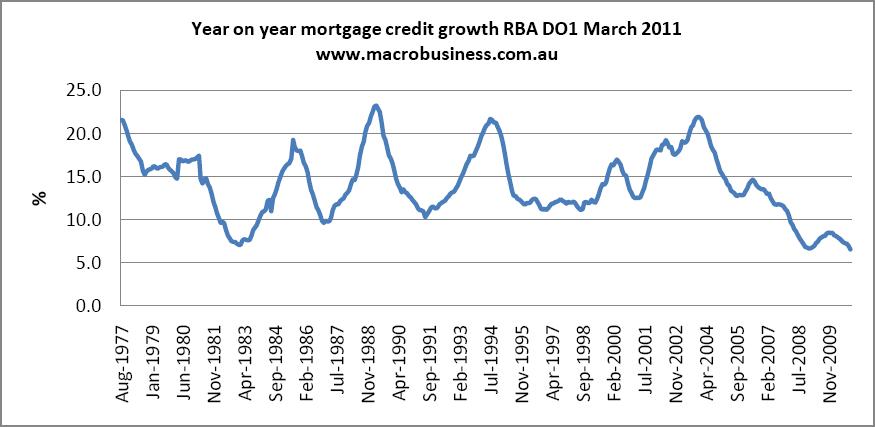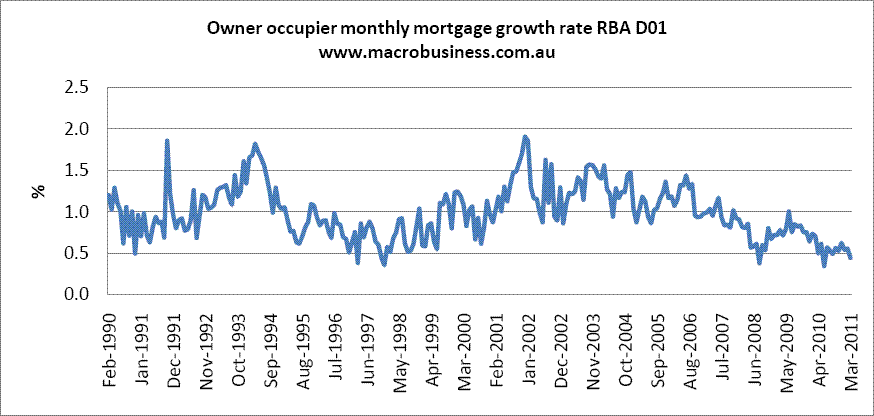March Credit Aggregates are out from the RBA and make fascinating reading. Here’s what the bank had to say:
Total credit provided to the private sector by financial intermediaries rose by 0.6 per cent over March 2011, after rising by 0.6 per cent over February. Over the year to March, total credit rose by 3.6 per cent.
Housing credit increased by 0.4 per cent over March, following an increase of 0.5 per cent over February. Over the year to March, housing credit rose by 6.6 per cent.
Other personal credit rose by 0.6 per cent over March, after rising by 0.2 per cent over February. Over the year to March, other personal credit increased by 1.0 per cent.
Business credit rose by 1.0 per cent over March, after rising by 0.8 per cent over February. Over the year to March, business credit declined by 0.6 per cent.
That doesn’t quite capture the drama of what is transpiring here. Following is a graph of the complete history of mortgage growth going back to the mid seventies. We have hit the lowest yearly growth rate for housing finance ever (all charts go up to March 2011, despite what they say):

Moreover, if we break down the March figure we find the month on month growth rates for investment mortgages down to 0.3% and 0.4% for owner occupier. Both of these are stuck in strong downtrends and flirting with individual lows as well:


Now, I have written extensively in support of what I describe as a process of disleveraging (that is, falling growth rates for credit) that I believe the RBA is pursuing. So, they will not be upset by these figures.
Moreover, the growth of business credit for March confirmed the February bottom, which will also please the RBA. That is the other half of the disleveraging story – handing economic growth off to business investment rather than consumer credit – and it appears to be going quite well.
However, the problem with this strategy was made obvious today with the startling falls in March house prices. If credit growth remains at these levels, then prices will keep falling and there is a danger that negatively geared housing investors – that are all in it for capital growth – will increasingly run for the exits. Indeed, if they’re rational, they’ll do just that because the RBA’s new growth paradigm leaves them facing capital losses on leveraged investments. Even if prices stay falt. In other words, the RBA’s disleveraging strategy relies on property investors remaining irrationally attached to losing investments.
The alternative, of course, is that credit growth picks up. But with inflation lurking, business borrowing picking up and the capex boom to come, that would force rate rises until it stopped.
I have no evidence beyond weak investor mortgage growth but in my view the increasing ratios of unsold properties on the market nationally is symptomatic of this inherent contradiction in monetary policy.

